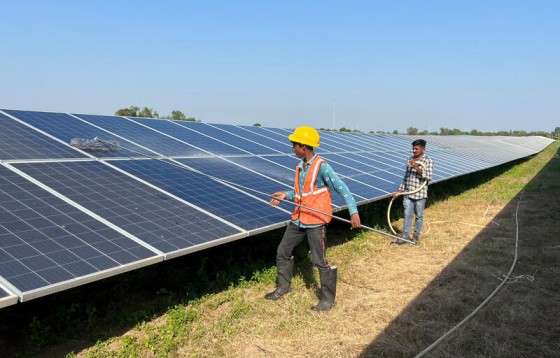India–US Trade Tensions Rise Over Steel and Auto Tariffs NMDC Limited reports a 38% drop in Q4 FY24 consolidated net profit RINL to Raise $23 Million Through Land Sales Amid Crisis

In the fiscal year 2023, India's energy subsidies have surged to a record ₹3.2 lakh crore ($39.3 billion) hitting a nine-year high record, according to the latest findings. This increase is attributed to the country's broad-based strategy to boost its energy supply in light of the 2022 global energy crisis and its burgeoning energy needs.
This achievement happens at a time when India is still leading the way on climate change internationally, having invested in decarbonisation to meet its net-zero goals and pushed for a tripling of the world's renewable energy capacity by 2030 while serving as the G20 president.
The report, "Mapping India's Energy Policy: A Decade in Action," by the International Institute for Sustainable Development (IISD), points out that less than 10% of the total energy subsidies were allocated to clean energy in FY 2023. In contrast, subsidies for coal, oil, and gas accounted for about 40%, with a significant portion directed towards electricity subsidies, especially for agriculture.
The surge in energy subsidies is largely a reaction to the heightened energy demands and the impacts of the international energy price crisis, spurred by Russia's invasion of Ukraine. India implemented several measures to mitigate these impacts, including capping retail prices for petrol, diesel, and domestic liquefied petroleum gas, reducing taxes, and providing direct budgetary transfers to businesses and consumers.
As a result, oil and gas subsidies witnessed a 63% increase from the previous fiscal year. Coal subsidies also experienced a 17% rise over the same period, with coal making up 45% of India's total primary energy supply in 2022, an increase from 43% in 2020. Consequently, fossil fuel subsidies were five times higher than those for clean energy.
Despite the economic growth propelling India towards becoming a $5 trillion economy by 2027, and an increase in both clean energy and fossil fuel subsidies by approximately 40% in FY 2023, concerns over the sustainability of fossil fuel subsidies persist. Swasti Raizada, Policy Advisor at IISD and co-author of the report, stated, "While fossil fuel subsidies have reduced by 59% since their peak in 2013/2014, without further targeting and a return to a market-brd pricing regime, they could mount again, resulting in budgetary impacts."
The report suggests that earmarking a portion of fossil fuel tax revenues could support India's just transition needs. Deepak sharma, Policy Analyst at IISD, emphasized the significance of substantial investment for India's energy transition to be just, sustainable, and inclusive, highlighting the critical role of state-owned enterprises in this transition linked to India's net-zero commitments.
Also Read : India set to halve oil refiners' FY24 energy transition equity support India's coal imports rise by 5% to 52 MT in April-May